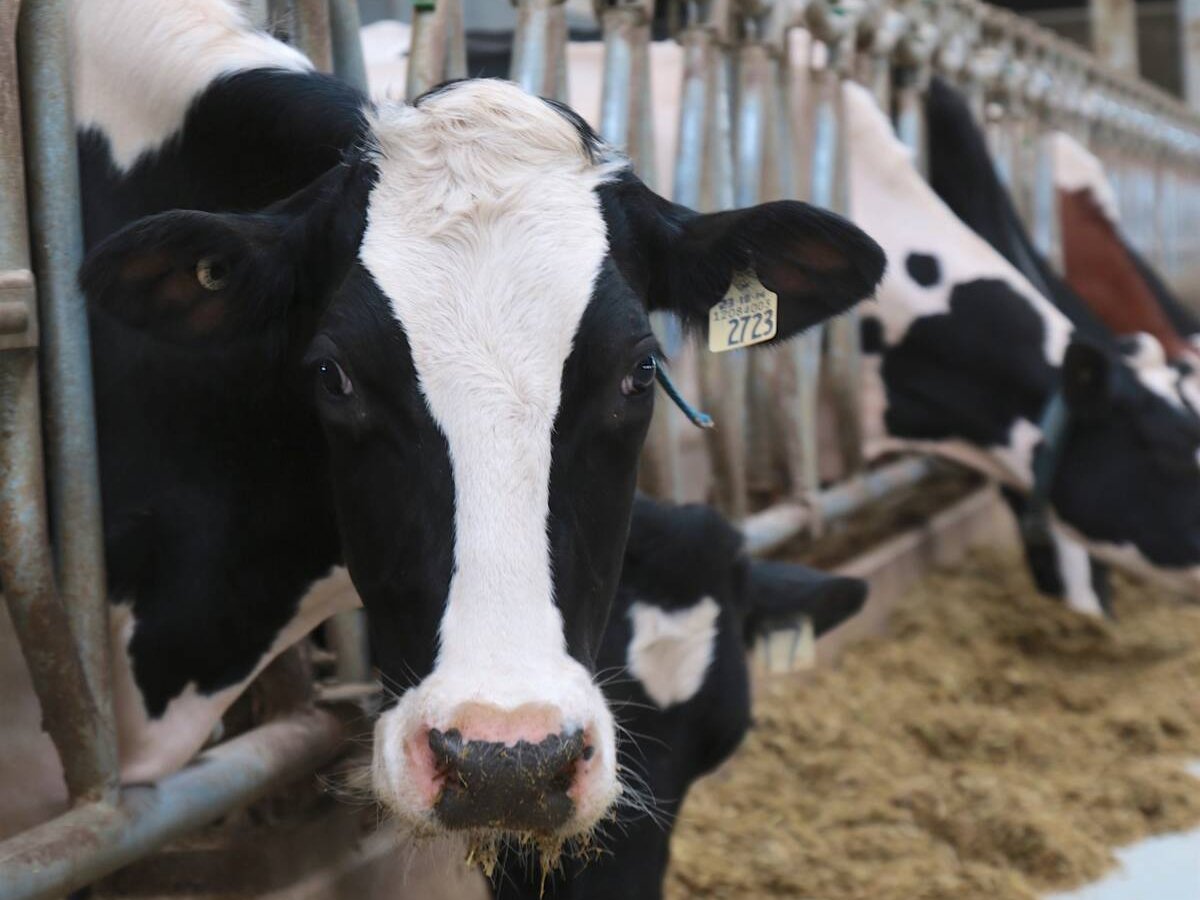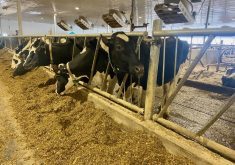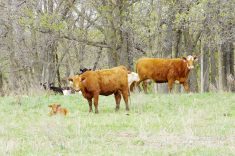The Organization for Economic Co-operation and Development’s recent annual report of farm subsidies around the world levelled a finger at supply management for increasing Canada’s support levels, although Canada’s level of subsidy still hit below the report’s average.
Why it Matters: The OECD advocates for free and open markets around the world, and its reports are unique comparisons on the levels of support between countries.
While the report said support levels in Canada averaged 8.2 per cent of gross farm receipts in 2022-2024, below the OECD average of 13.2 per cent, it criticized the country’s system of supply management for dairy, eggs and poultry, saying recent high levels of transfers to the sector amounted to 28 per cent of commodity gross farm receipts between 2022 and 2024.
Read Also

U.S. government investigates high input costs
The USDA and DOJ are investigating high input costs, but nothing is happening in Canada.
The OECD considers higher milk prices in Canada due to managed supply and import quotas to be a subsidy.
The support level from supply management was down in the past three years because avian influenza outbreaks in the United States resulted in higher egg and poultry prices there.
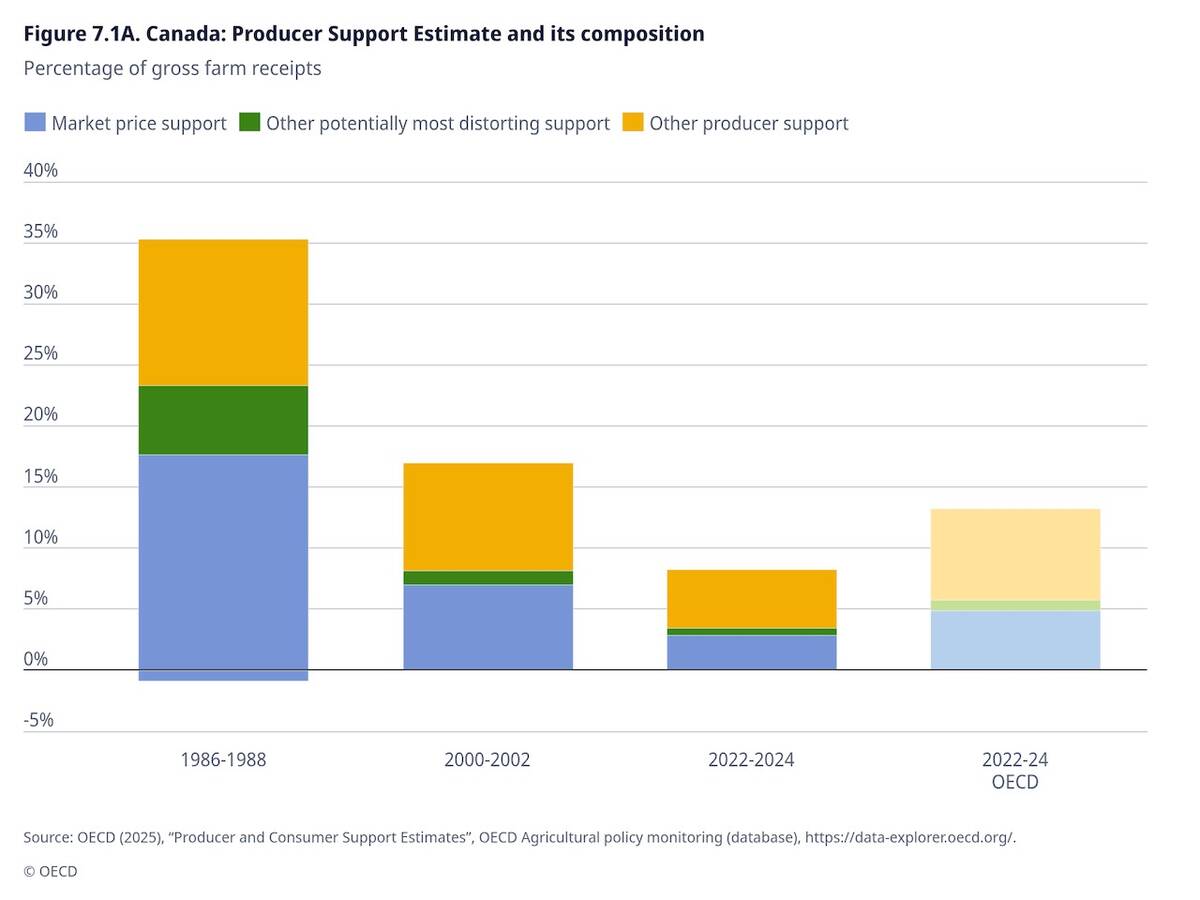
The OECD had some cautions about the growing list of government funding programs tied to sustainability. Some programs, such as AgriMarketing, should have better greenhouse gas emissions reporting, the OECD said. Food imports and their sustainability impacts could have more scrutiny.
Programs that support innovation and knowledge transfer continue to decline in Canada ,and the OECD says that will need to change if Canada wants to reverse its trend of total factor productivity growth lagging the world average.
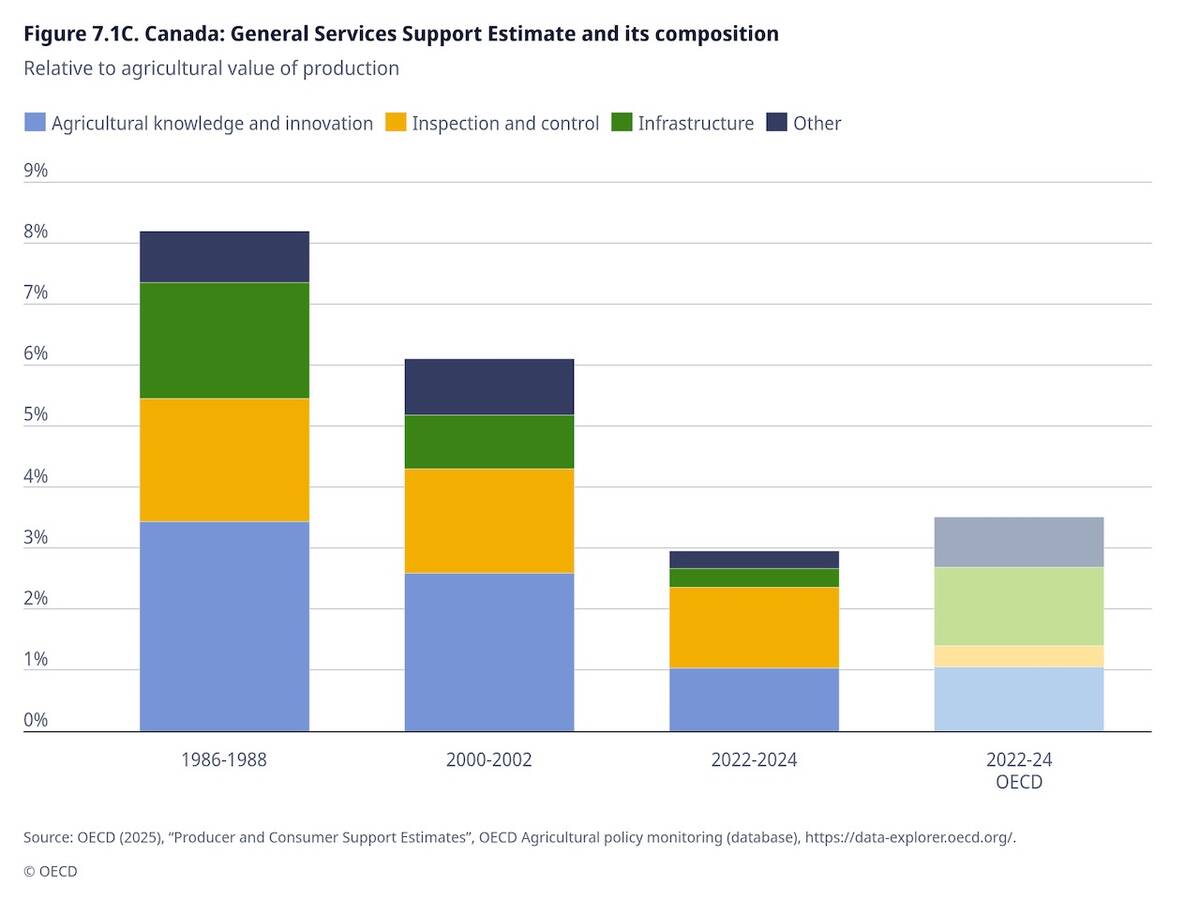
The OECD recommends moving to more outcomes-based measures versus support for adopting certain practices in program creation. That means farmers who receive a payment for changing a practice wouldn’t receive it until the government was sure that it received the expected result.
The U.S. continues to have even lower support than Canada, at about seven per cent of gross farm receipts, but if the support level attributed to supply management is removed, support for the rest of Canadian agriculture would be lower.
That level is well down from the 20 per cent of the mid-1980s and 2000s.
Sugar receives market price support by border controls in the U.S.
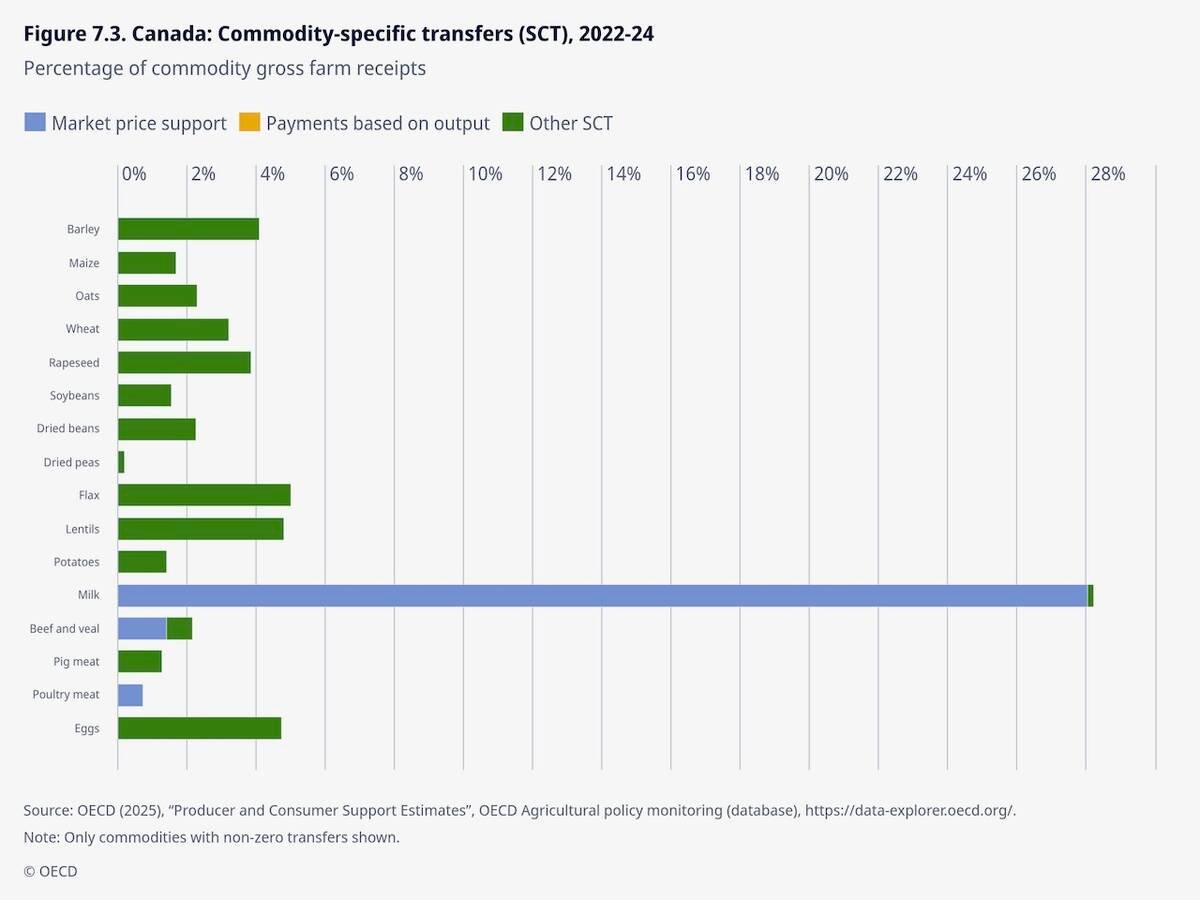
The United Kingdom has decreased its support levels to about 14 per cent from closer to 20 per cent in the early 2000s when it was part of the European Union.
Japan continues to have very high farm subsidies, at 32 per cent, but that’s down from 60 per cent 20 years ago.


